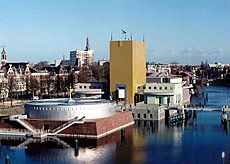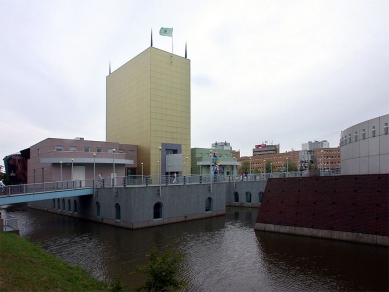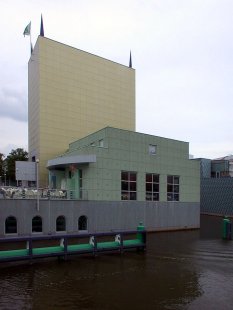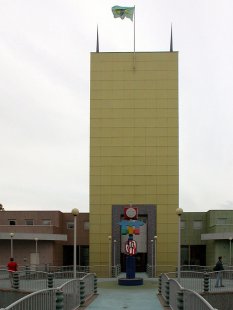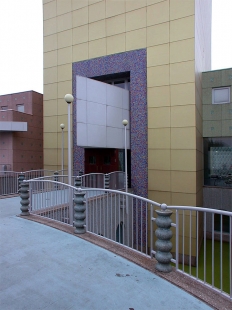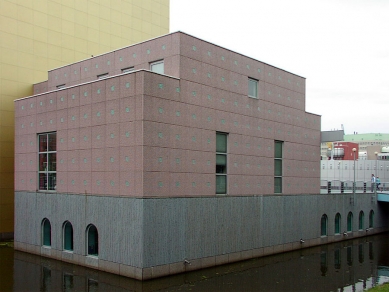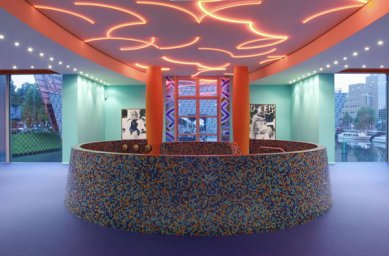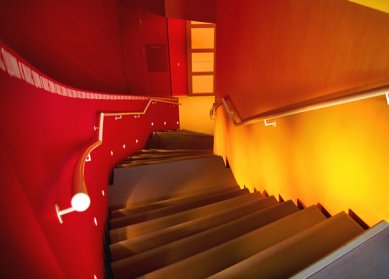In 1990, the local company Gasunie celebrated its 25th anniversary and decided to give the city a gift on this occasion. Three years earlier, Frans Haks, the director of the Groningen museum, had approached Italian designer Alessandro Mendini to design a new museum for him. Mendini, who is more of a designer than an architect, invited
Philippe Starck, Michele de Lucchi, and
Coop Himmelb(l)au to collaborate. A generous gift of 25 million Dutch guilders facilitated everything and allowed the realization of a museum complex consisting of three buildings on the Verbindings canal. Even during the preparations, opponents of the museum managed to block the project for an entire year. Protests mainly concerned the controversial appearance of the museum. Local residents feared that their houses would lose value and that no one would want to buy their properties anymore. Construction of the museum began in 1992 and took two years to complete. Eventually, people had to get used to its distinctive colors and unusual shapes. The Groninger Museum also came about thanks to the efforts of councilman Ypke Gietema, who, despite all the protests, pushed for the museum to be located in its current place. A pedestrian bridge runs through the center of the museum, connecting the main train station with the city ring and center. The low circular pavilion is by French designer Philippe Starck, the middle golden tower was designed by Alessandro Mendini, and the eastern pavilion is the work of the Vienna deconstructivists Coop Himmelb(l)au.
Alessandro Mendini, the author of the middle part of the museum, is known more as a designer than an architect. His extravagant geometry and colorful signature are often categorized under the so-called Memphis Style. This aesthetic has influenced the work of Milan Knížák and Bořek Šípek in our country.
The English translation is powered by AI tool. Switch to Czech to view the original text source.


